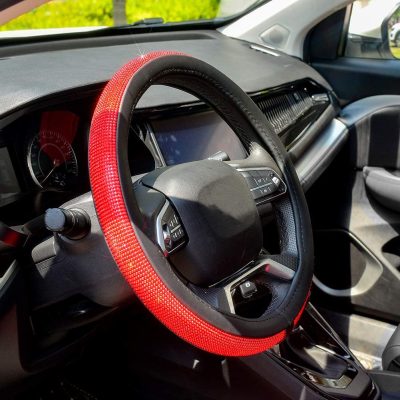A car cover is a simple yet effective accessory that can help protect your vehicle from various environmental hazards, including sun, rain, snow, dust, and bird droppings. In this ultimate guide to car covers, we’ll cover everything you need to know about choosing, using, and maintaining car covers.
1. Types of Car Covers:
There are several types of car covers available on the market, each designed for specific purposes:
- Outdoor Car Covers: These are designed to protect your vehicle from outdoor elements like rain, UV rays, bird droppings, and tree sap. They are typically made of durable and weather-resistant materials.
- Indoor Car Covers: These covers are meant for indoor storage and provide protection against dust, dirt, and minor scratches. They are usually made from softer materials to prevent any damage to your vehicle’s finish.
- All-Weather Car Covers: These versatile covers are suitable for both indoor and outdoor use. They offer protection against a wide range of environmental factors.
- Custom-fit vs. Universal-fit: Custom-fit covers are designed specifically for your vehicle’s make and model, offering a snug fit. Universal-fit covers are more generic and may not fit as well but are often more affordable.
2. Choosing the Right Car Cover:
Selecting the right car cover depends on your specific needs and budget. Consider the following factors:
- Climate: Your climate will dictate the level of protection required. If you live in an area with heavy rain or intense sunlight, you’ll need a cover with superior weather resistance.
- Material: Car covers are made from various materials, including polyester, polypropylene, and more. Ensure the material is breathable to prevent moisture buildup.
- Size: Ensure you choose the correct size for your vehicle. A tight fit prevents wind from lifting the cover and causing damage.
- Security Features: Some covers come with built-in locking systems to prevent theft.
3. Using a Car Cover:
Proper usage is essential to get the most out of your car cover:
- Clean Your Car: Always start with a clean car. Dirt and debris on your car’s surface can scratch the paint when covered.
- Install Properly: Follow the manufacturer’s instructions for installation. Make sure the cover is evenly draped over the vehicle.
- Secure the Cover: If your cover has straps or tie-downs, use them to secure the cover in place, especially in windy conditions.
- Check Regularly: Periodically check the cover for any signs of wear, tear, or damage. Clean it as needed to prevent mold or mildew growth.
4. Maintaining Your Car Cover:
To extend the lifespan of your car cover:
- Clean Regularly: Clean the cover as per the manufacturer’s instructions. Most covers can be machine-washed or hand-washed.
- Store Properly: When not in use, store the cover in a cool, dry place. Avoid folding it when wet, as it can promote mold growth.
- Inspect for Damage: Regularly inspect the cover for tears or holes and repair them promptly to maintain its effectiveness.
5. Car Cover Tips:
- Remove the cover gently to avoid dragging it across your car’s finish.
- Use a soft cloth or microfiber towel to wipe down your car before covering it to prevent scratches.
- Avoid using a cover on a wet or dirty car, as this can trap moisture and debris against the paint.
- Use additional accessories like wheel covers or mirror covers for added protection.
In conclusion, a good-quality car cover can be an excellent investment to protect your vehicle from various environmental elements. Careful consideration of your climate, material, and proper maintenance will ensure your car remains in top condition for years to come.
![]()





















